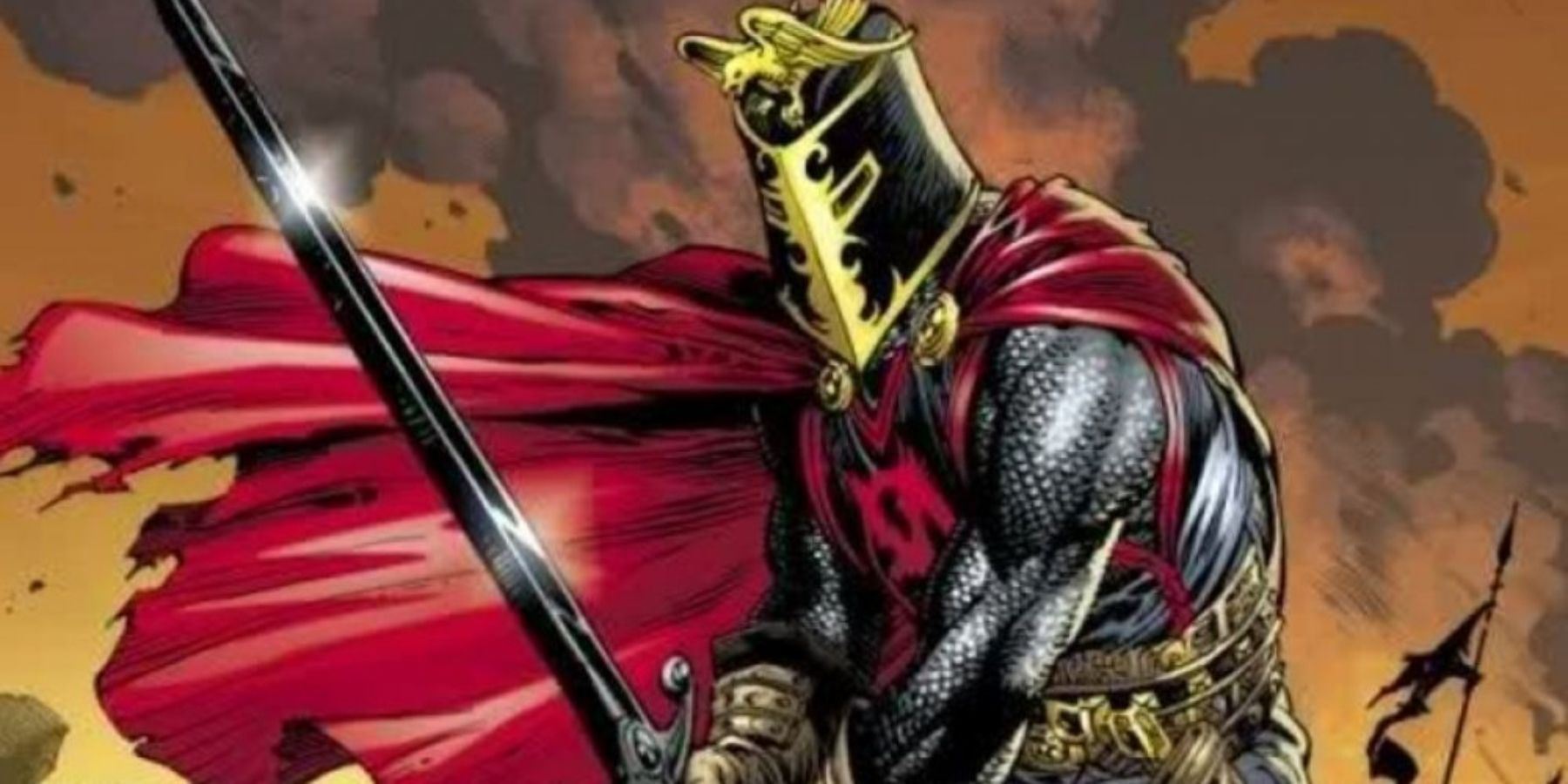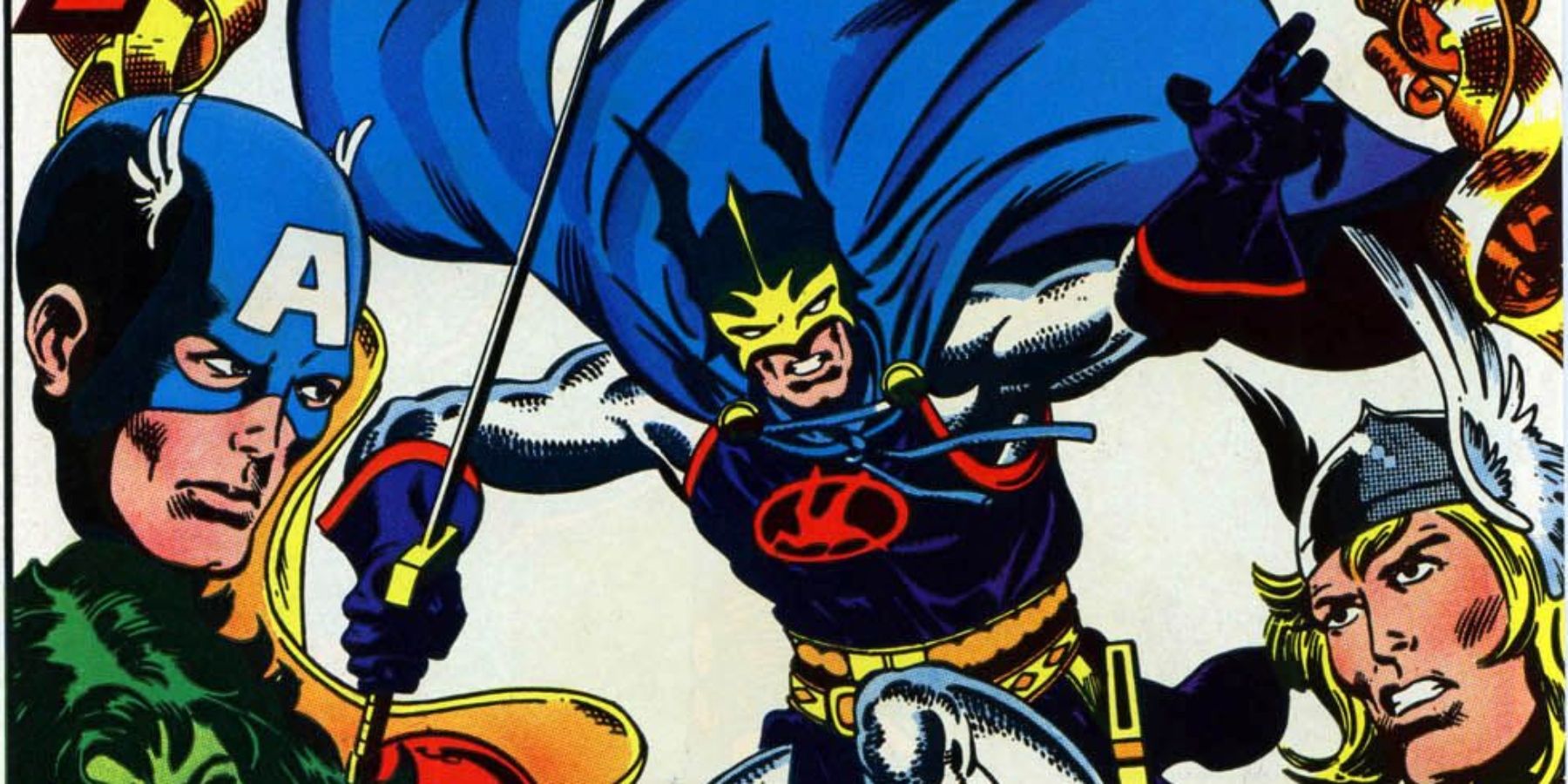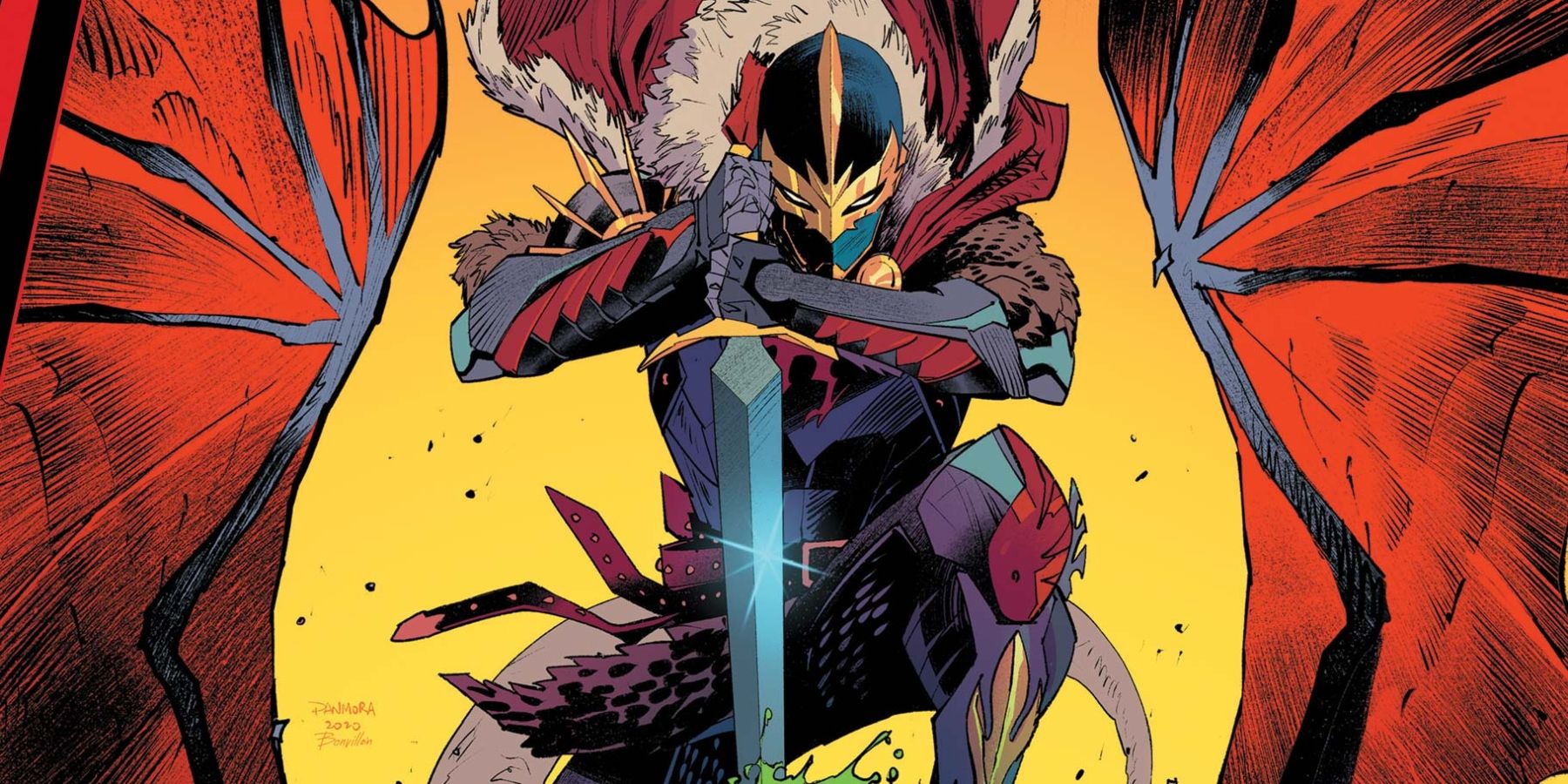The following article contains major spoilers for The Eternals. The latest film in the Marvel Cinematic Universe, Eternals, released in theaters last weekend. And as with every new MCU entry, it’s introduced plenty of new faces who will nevertheless be familiar to die-hard comic fans.
One such character is Dane Whitman, played by Kit Harington — aka Jon Snow from Game of Thrones. Despite being played by such a high-profile actor, Dane is barely in the movie, appearing only at the very beginning and very end of the film. So needless to say, there’s much more to his story than what we see in Eternals.
A Man With a Dark Secret
Dane is introduced as a history professor living in London, who also happens to be dating the film’s protagonist Sersi (Gemma Chan). Soon after, the duo is attacked by a monstrous Deviant, prompting Sersi to tell Dane about her true identity as an Eternal. Dane doesn’t appear again until the ending of the film when he tries to tell Sersi a secret of his own — something about his “complicated” family history. But before Dane can reveal his big secret, Sersi is abducted by Arishem the Judge, leader of the Celestials.
Dane then reappears in the film’s post-credits scene, in which he opens a chest containing an ancient sword. He recites the incantation “Mors mihi lucrum” — Latin for “Death is my reward” — which seems to activate some kind of magic power in the sword. Dane is then interrupted by an unseen intruder, who asks him if he’s sure he’s ready. This visitor has been confirmed by Eternals director Chloé Zhao to be the MCU’s Blade (played by Mahershala Ali), but this doesn’t help clear up the mystery behind Dane Whitman’s past, or the true nature of this mystical sword. For that, looking into Dane’s comic book roots will be required.
A Complicated Family History
A cursory search will reveal that Dane Whitman’s comic book counterpart is a superhero known as the Black Knight. And while this is true, appreciating Dane’s full story requires a complete understanding of the Black Knight’s legacy — a legacy that dates all the way back to the reign of King Arthur. Indeed, Dane Whitman is not the first hero in Marvel history to bear the mantle of the Black Knight.
Black Knight #1 was released in May 1955, written by Stan Lee and drawn by Joe Maneely. Despite predating Lee’s more iconic characters, the original Black Knight was hardly a traditional superhero. He was an actual medieval knight, Sir Percy of Scandia, who fought alongside King Arthur’s Knights of the Round Table. (Note: Sir Percy does not appear in any actual Arthurian legends, and was an original creation of Lee’s.) By day, Sir Percy posed as a clumsy and timid nobleman who’d rather strum a lute than wield a sword. However, he had a secret identity as the Black Knight, fighting against the schemes of Sir Mordred and Morgan Le Fay using the Ebony Blade — an enchanted sword forged by Merlin from a fallen meteorite.
While the original Black Knight comic starring Sir Percy ended after five issues, another Black Knight would later appear in 1964’s Tales to Astonish #52. This time, the man beneath the helmet was Nathan Garrett, a supervillain who battled Ant-Man and the Wasp using a high-tech lance and a genetically engineered flying horse. Garrett reappeared multiple times, even serving as a founding member of Baron Zemo’s Masters of Evil in The Avengers #6. Despite initially being depicted as a totally unrelated character to the original Black Knight, later comics would reveal that he was in fact a descendant of Sir Percy.
Avenger of the Ebony Blade
Dane Whitman himself didn’t appear until Avengers #47 in October 1967, in which he was introduced by writer Roy Thomas and artist John Buscema as an ordinary scientist who happened to be Garrett’s nephew. The next issue revealed that the now-deceased Garrett had begged Dane on his deathbed to use the Black Knight’s legacy for good. And so, Dane became the new Black Knight, teaming up with the Avengers against Ultron’s new Masters of Evil in issue #55 before embarking on a career as a solo hero.
It wasn’t until 1968’s Marvel Super Heroes #17, also penned by Thomas, that Dane’s status as a descendant of Sir Percy was revealed. Dane visits his family’s ancestral castle, where he encounters the ghost of Sir Percy and claims the Ebony Blade as his own. Dane eventually joined the Avengers in 1969’s Avengers #71, and would serve as an on-again-off-again member of the team for years, at one point becoming Sersi’s lover just like in the MCU. But in the 1980s, Avengers writer Roger Stern would reveal that the Ebony Blade was cursed by all the bloodshed by Sir Percy, causing it to slowly corrupt its wielder and fill them with an uncontrollable bloodlust. Dane would continually battle this curse, but never conquer it for good.
Speaking of Avengers storyline, the 1990s “Gatherers Saga” by writer Bob Harras and artist Steve Epting featured Black Knight and Sersi facing off against an evil variant of Dane called Proctor, who led a team of villainous Avengers variants in a mad quest to kill every Sersi in the multiverse. (For some reason.) Later, Dane went on to join the UK’s own superhero team, MI-13, in the 2008-2009 Captain Britain and MI-13 series by writer Paul Cornell and artist Leonard Kirk — despite the fact that Whitman himself is actually American in the comics.
Modern Crusader
Dane then fell out of the spotlight for a few years until the 2015-2016 Black Knight miniseries by writer Frank Tieri and artist Luca Pizzari. In this story, Dane finds himself trapped in a fantastical sword-and-sorcery realm called Weirdworld, carving out the kingdom of New Avalon while the Avengers fight to free him from the Ebony Blade’s curse. Later, the King in Black: Black Knight one-shot was released in February 2021, written by Simon Spurrier and drawn by Jesús Saiz as a tie-in to the Venom-focusedKing in Black crossover storyline.
In the story, Dane faces off against Knull, the ancient god of darkness and creator of the Symbiotes, who reveals that Merlin lied to Sir Percy about the Ebony Blade’s true nature. In truth, the Ebony Blade does not corrupt its wielders at all — rather, can only be wielded by the impure of heart, meaning Dane’s bloodlust always came from within. Spurrier continued this story in this year’s Black Knight: Curse of the Ebony Blade miniseries, in which Dane confronts both the darkness inside himself and a newly resurrected Mordred.
The story of Dane Whitman is one of love, loss, and struggling against one’s own inner demons. And if the post-credits scene in Eternals is any indication, the MCU’s Dane will have his own price to pay for taking up the Black Knight mantle. Even so, he has the potential to be one of the MCU’s most compelling new characters. Only time will tell when Dane Whitman becomes the Black Knight on the big screen, but when he does, it’ll surely be a sight to see.


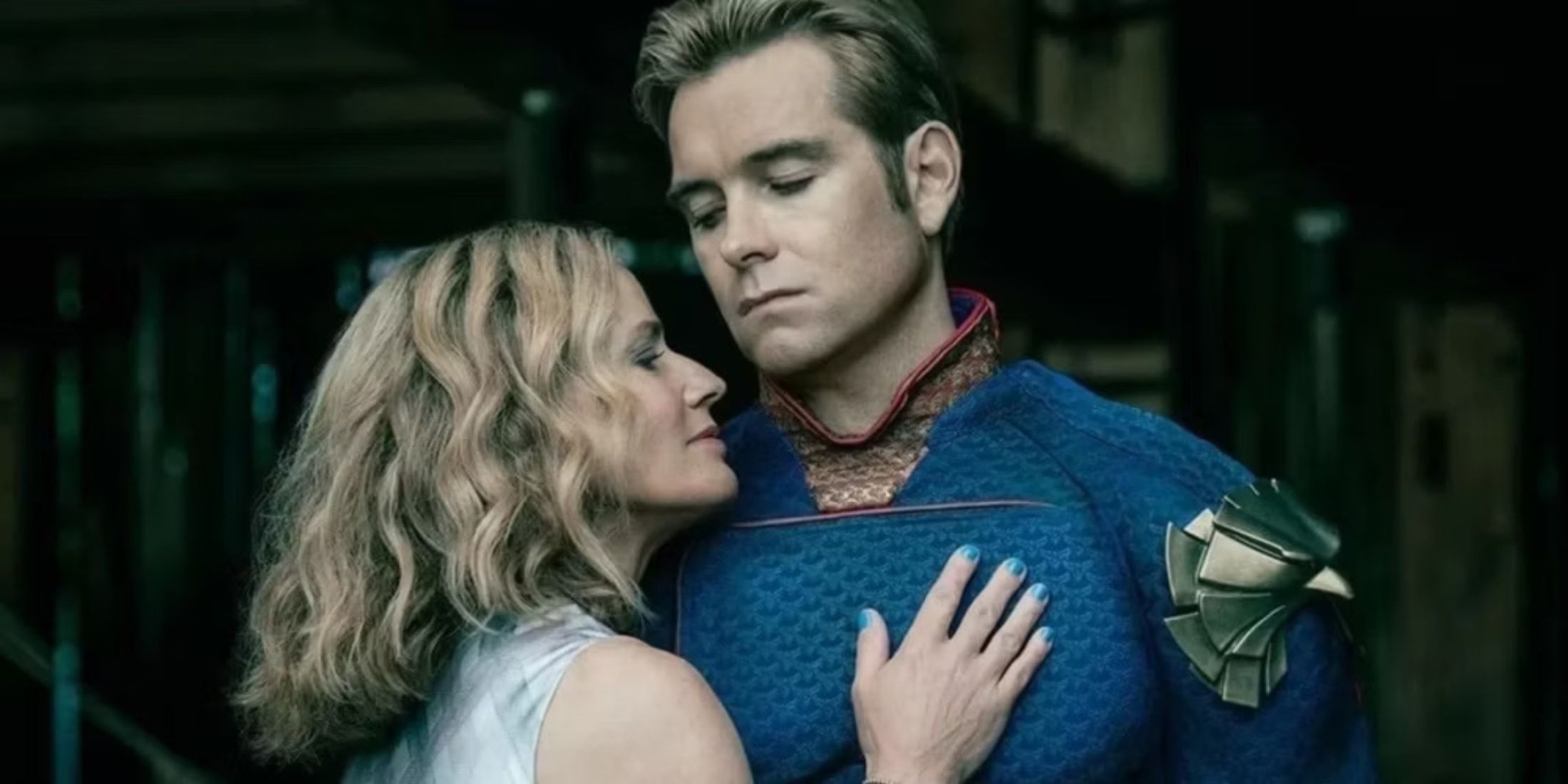
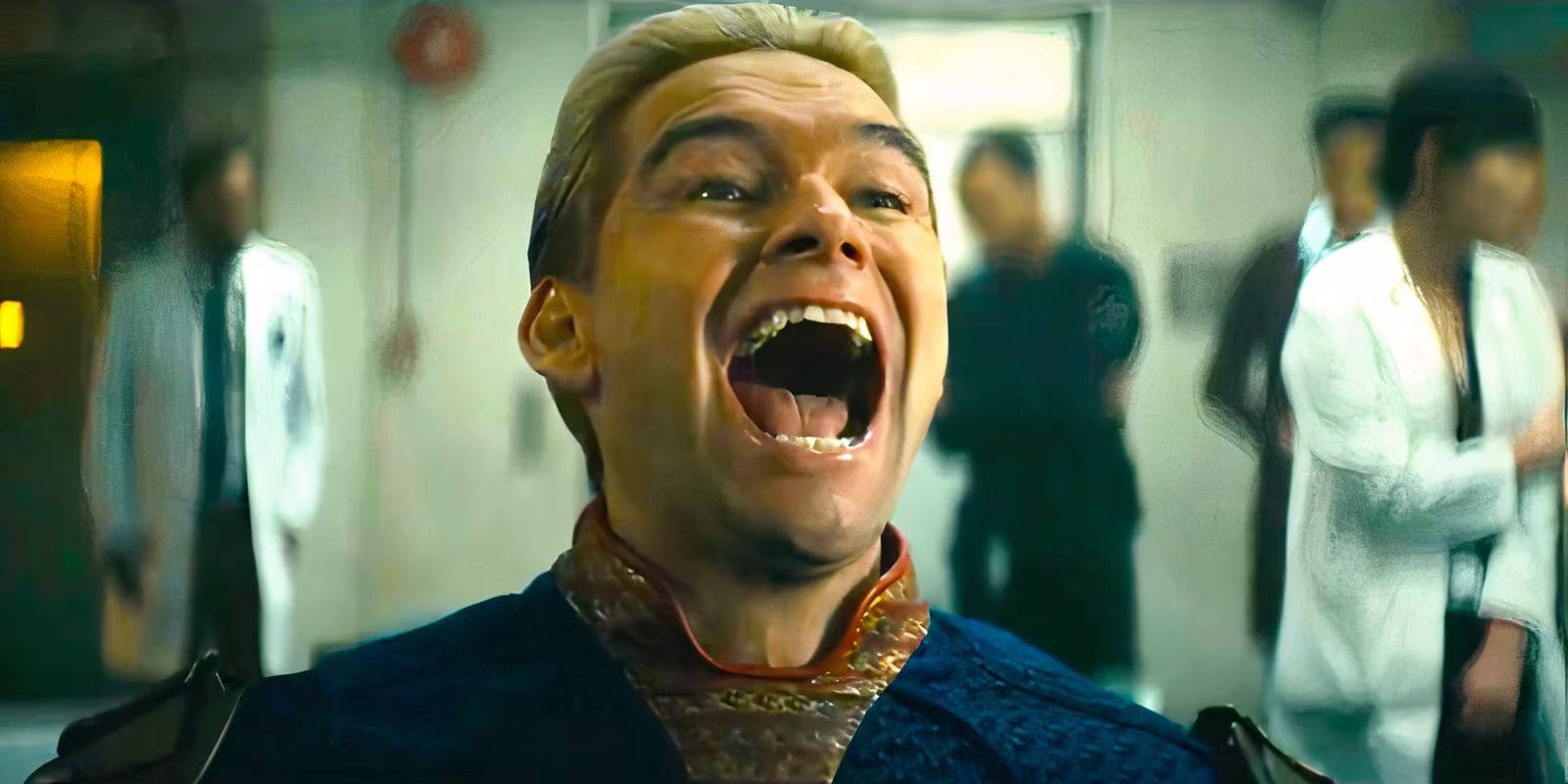
.jpg)

